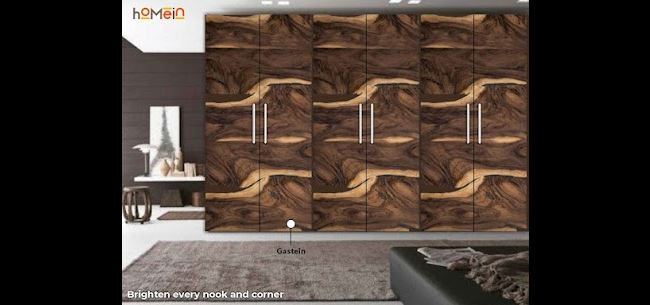|
Introduction
to Wood Veneers as a Sustainable Design Choice
Wood
veneers are a sustainable design choice due to their ability to maximize the
use of natural resources. By using thin slices of wood, manufacturers can cover
larger surface areas with less material, reducing waste and promoting
eco-friendly practices. Additionally, wood veneers are often sourced from
responsibly managed forests, ensuring that the production process is
environmentally conscious and supports sustainable forestry practices. This
makes them an ideal option for those looking to incorporate natural elements
into their design projects while also prioritizing sustainability and
environmental responsibility. 
The
Sustainability of Wood Veneers
Wood
veneers are a sustainable choice for design projects due to their renewable
nature and minimal environmental impact. Unlike solid wood, veneers are sliced
from a log, allowing for more efficient use of the resource. Additionally, the
process of producing veneers requires less energy and resources compared to
solid wood, making them a more eco-friendly option.
Furthermore,
wood veneers are biodegradable and can be easily recycled at the end of their
lifespan, reducing waste and promoting a circular economy. This not only
minimizes the environmental footprint of design projects but also contributes
to a more sustainable future for generations to come. Overall, the
sustainability of wood veneers makes them an attractive choice for those
looking to incorporate natural elements into their designs while prioritizing
environmental responsibility.
Creative
Ways to Incorporate Wood Veneers in Interior Design
Wood
veneers can be used in a variety of creative ways in interior design, such as
on accent walls, ceilings, furniture, and even as decorative elements on doors
and cabinets. By mixing and matching different wood veneer types and finishes,
designers can create unique and visually appealing spaces that showcase the
beauty of natural wood. Additionally, incorporating wood veneers in unexpected
places, such as on lighting fixtures or room dividers, can add a touch of
warmth and sophistication to any room.
Benefits
of Using Sustainable Materials
Incorporating
sustainable materials like wood veneers in interior design not only adds a
natural and eco-friendly element to the space but also helps reduce the
environmental impact of the project. By choosing sustainable materials,
designers can promote responsible sourcing practices and contribute to a more
sustainable future for the planet.
Factors
to Consider When Selecting a Wood Veneer
When
selecting a wood veneer, it is important to consider the durability and
maintenance requirements of the material. Additionally, taking into account the
overall aesthetic and design goals of the space can help ensure that the wood
veneer chosen enhances the overall look and feel of the room.
Conclusion
In
conclusion, the environmental impact of a project can be significantly reduced
by choosing sustainable materials like wood veneer. By considering factors such
as durability, maintenance requirements, and design goals, designers can make
informed decisions that not only enhance the aesthetic appeal of a space but
also contribute to a more sustainable future. It is important for designers to
prioritize responsible sourcing practices and make conscious choices that align
with their values and commitment to environmental stewardship. Ultimately, by
incorporating sustainable materials like wood veneer into their projects,
designers can play a crucial role in promoting sustainability and creating a
better world for future generations.
For More Related Contents Visit Our
Website:
Website: https://homeinveneers.com
Follow Us
On: Whatsapp, Facebook, Instagram, YouTube, LinkedIn, Pinterest
|

